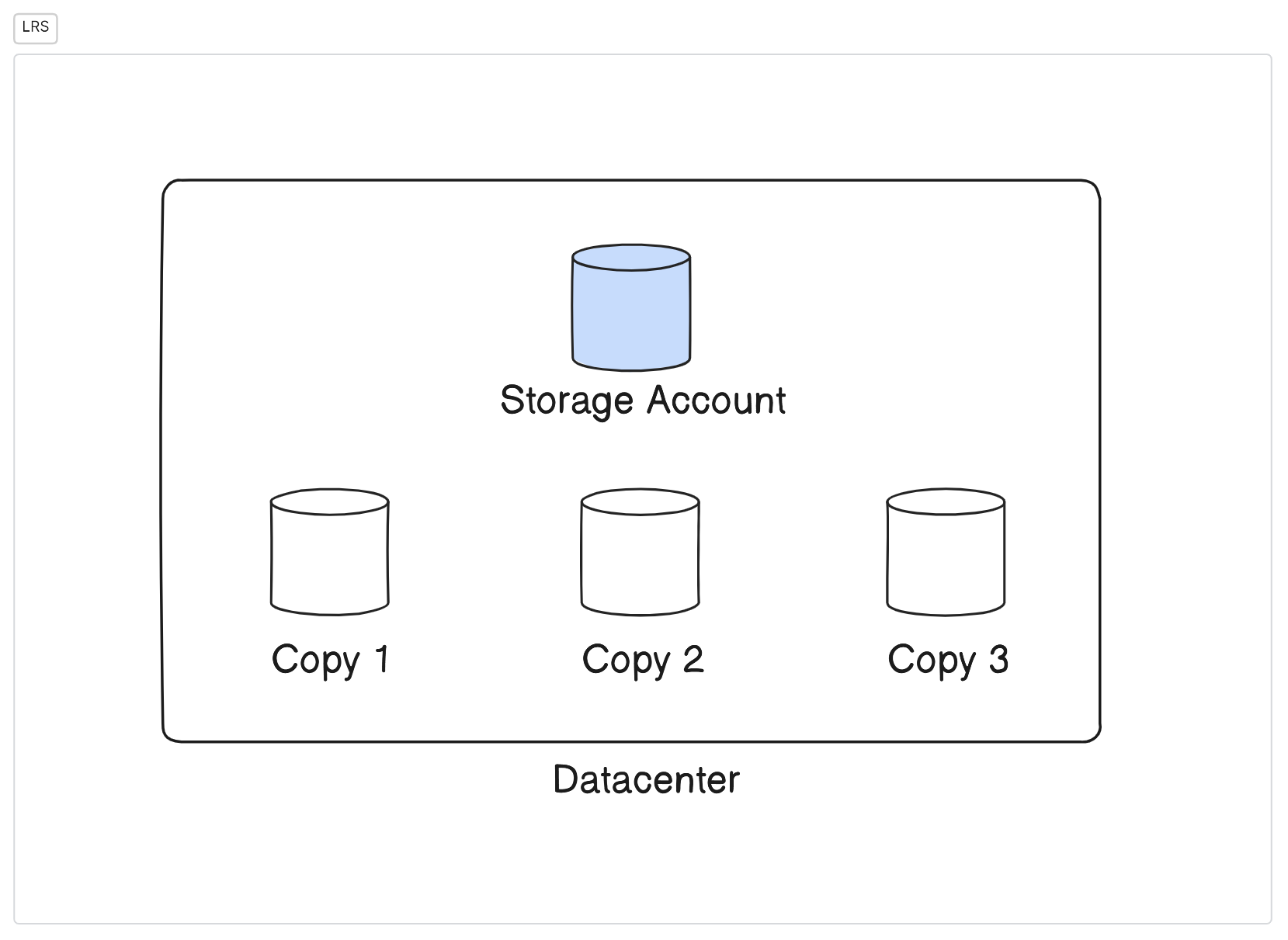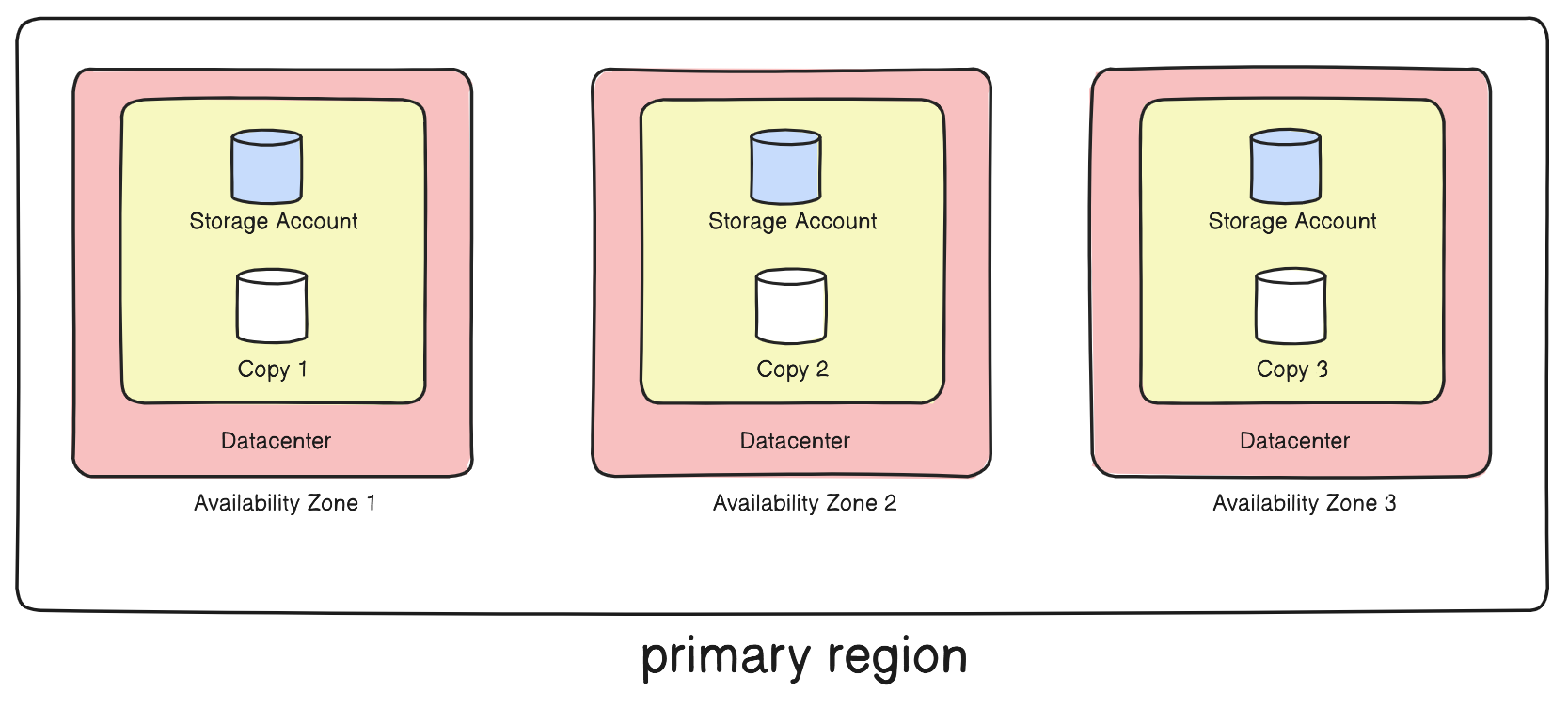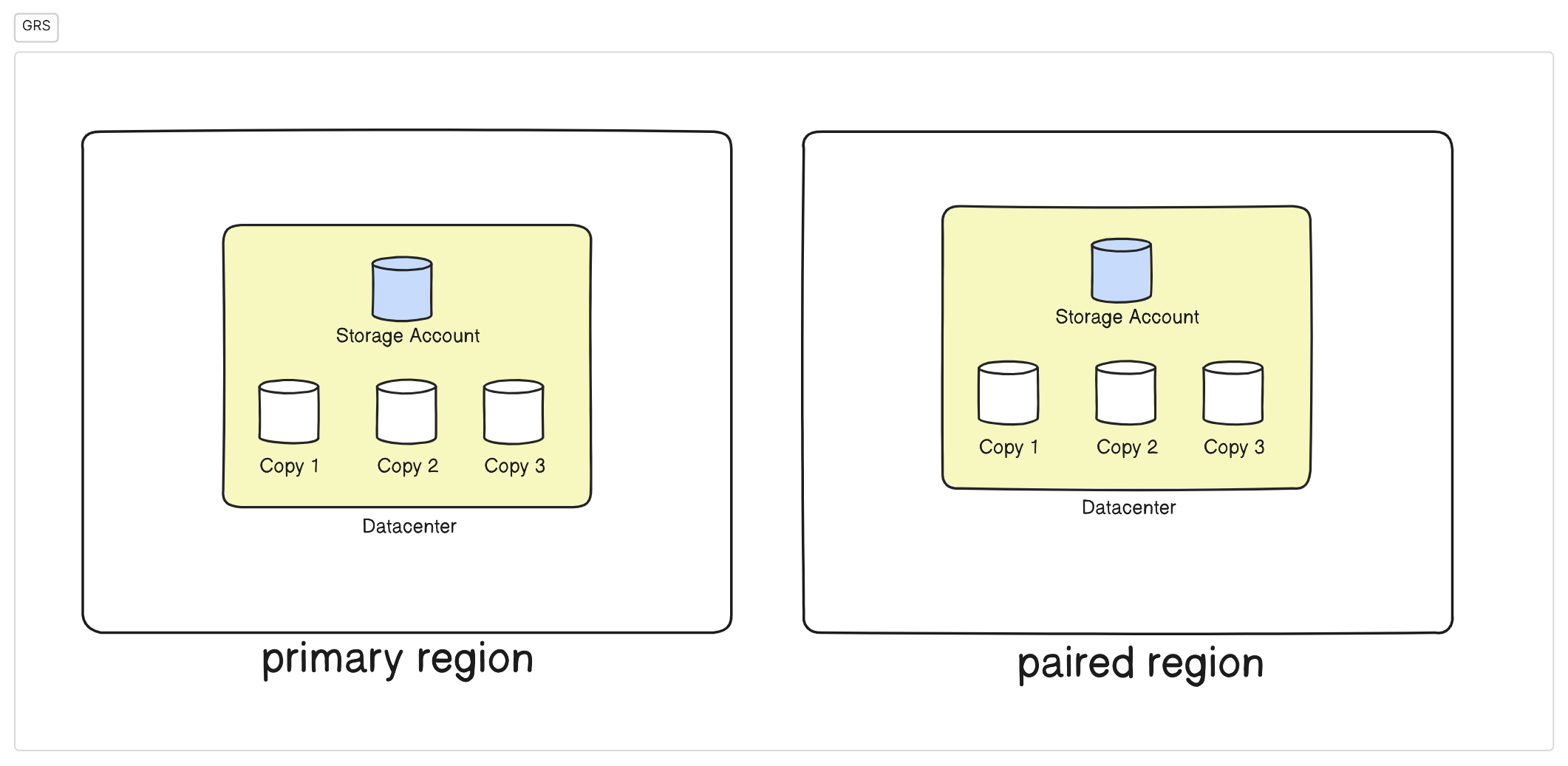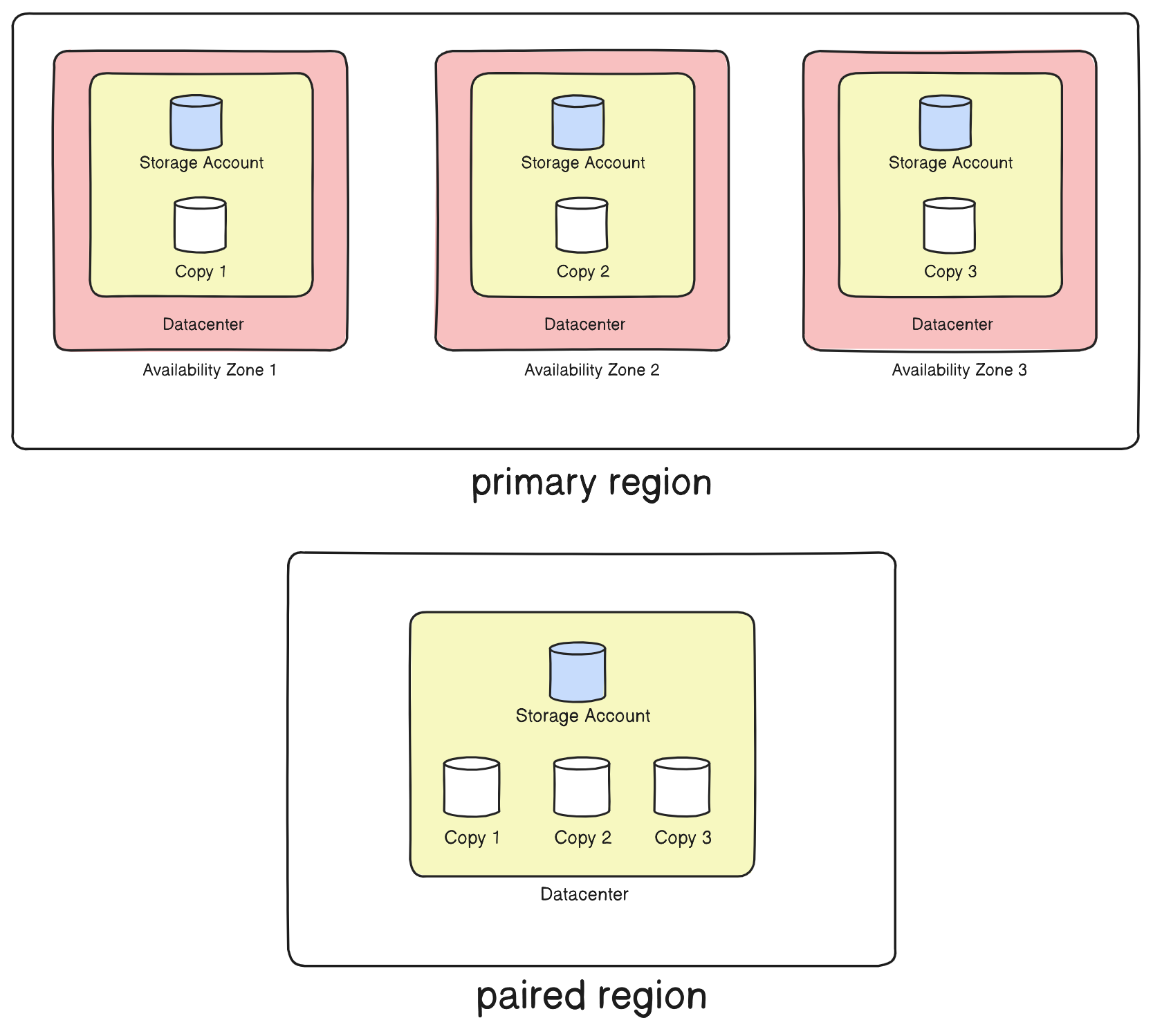4 Levels of Data Replication in Azure Storage
 Định Nguyễn Trương
Định Nguyễn Trương
Imagine working on a critical application where losing data equals losing business. Outages, hardware failure, natural disasters could happen anytime, and that means you could be out of business by bad luck.
Implementing replication and backup processes isn’t easy, takes time and expensive.
Luckily, most cloud providers already solved these problems for us.
In this article, we'll explore 4 levels of redundancy when working with Azure Storage, how safe it is and how to choose the right one for your business
Anyway, Azure Storage is cloud-based storage service provided by Microsoft Azure. Key components are: Blob, File, Queue, Table, and Disk storage.
Level 1: Locally redundant storage
When you create a storage account and store the blob in it, by default, azure will synchronously replicate your data 3 times within a single data center.

This is the first level and the lowest-cost solution. If a disaster such as an outage, fire, etc happens to the primary datacenter, all the data could be lost.
Level 2: Zone-redundant storage
Typically, one Azure region will contain many availability zones, and each zone contains one or many datacenters.
So, for zone-redundant storage, your Azure Storage data will be synchronously replicated into three availability zones.
If the primary availability zone is down, Azure will update the network, repointing the DNS of your storage to the other availability zone.

Availability zones have independent power, cooling. They are far enough to reduce the likelihood of weather, fire effects. So it’s pretty safe to protect your data.
But what if one Azure region is down, this is not likely to happen. I imagine it should be a big catastrophic failure. But even if it is, and you’re worried about this event, Azure has another higher level of redundancy.
Level 3: Geo-redundant storage
Azure divides regions based on geographical considerations. Typically, regions are organized within larger geographic areas. They are pretty far from each other ( more than a hundred miles at least). One region could be paired with one other region.
So, for Geo-redundant storage, your data will be replicated locally 3 times (LRS technique) and then, Azure will asynchronously copy your data to the zone located in the paired region with LRS too.
If the storage data in your primary region isn’t available, all of the requests will be forwarded to the data in the paired region.

Note: because your data is being copied asynchronously to the paired region, a failure in the primary region might cause some data loss if it isn’t recoverable. It depends on the recovery point, and typically, less than 15 minutes.
Level 4: Geo-zone-redundant storage
This should be the highest level, your data will be replicated in 3 availability zones in the primary region, and it will also be replicated using LRS in the paired region.
It’s like the combination of Geo-redundant storage and Zone-redundant storage.
“Microsoft recommends using Geo-zone-redundant storage for applications requiring maximum consistency, durability, and availability, excellent performance, and resilience for disaster recovery.” - Describe Azure storage redundancy - Training | Microsoft Learn

Recap:
Azure service provides us with 4 levels to protect your data. Locally redundant storage is the cheapest, and Geo-zone-redundant storage is the most expensive, so choose wisely for your business requirements.
Hope you have the best time working with Azure services.
References:
Subscribe to my newsletter
Read articles from Định Nguyễn Trương directly inside your inbox. Subscribe to the newsletter, and don't miss out.
Written by
